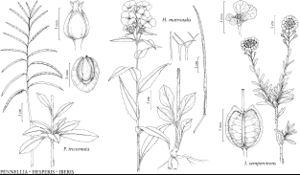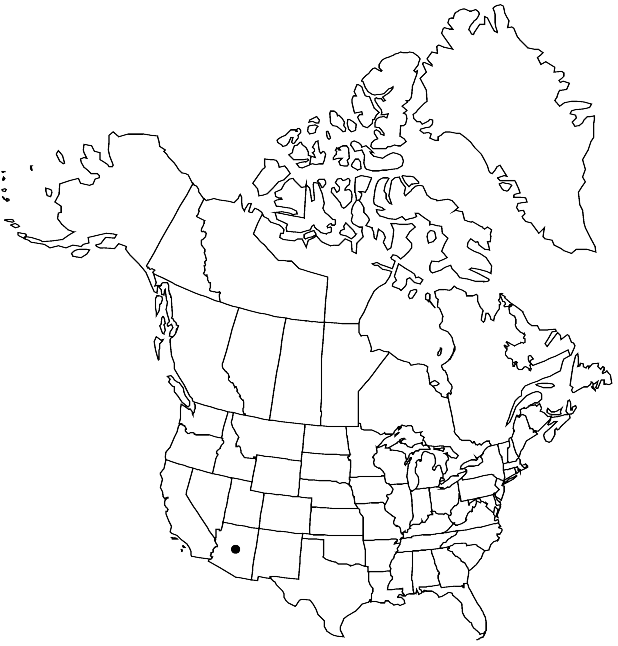Pennellia tricornuta
Novon 11: 339. 2001.
Stems simple or few from base, 1.5–9 dm, pubescent proximally, trichomes simple and long-stalked, 2–3-rayed. Basal leaves usually persistent; petiole 0.5–3 cm; blade oblanceolate, 3–9 cm × 3–23 mm, margins dentate, surfaces pubescent, trichomes stalked, 2–4-rayed. Cauline leaves (distal) sessile; blade linear, 2.7–7.5 cm × 1–9 mm, surfaces glabrous or sparsely pubescent. Racemes secund, 2–6 dm in fruit. Fruiting pedicels ascending, arcuate, 7–11 mm. Flowers: sepals purple or green, oblong, 2.3–4 × 0.8–2.1 mm, (subequal); petals lavender apically, spatulate, (2.7–) 3.3–4.5 × (0.5–) 1–1.5 (–1.7) mm, (equal); filaments (1.7–) 2–2.8 (–3.3) mm; anthers 0.9–1 (–1.3) mm. Fruits divaricate-ascending, straight or curved, 3.3–6.5 cm × 2–2.5 mm, latiseptate; valves glabrous; septum opaque; ovules 40–50 per ovary; style obsolete to 0.2 mm. Seeds uniseriate, flattened, winged, oblong, 2.4–2.8 × 1.2–1.9 mm; seed-coat not mucilaginous when wetted; cotyledons accumbent.
Phenology: Flowering Jul–Sep.
Habitat: Steep rocky slopes, under pines, road and sand banks
Elevation: 1300-2800 m
Discussion
Of conservation concern.
Pennellia tricornuta is known from Cochise, Pima, and Santa Cruz counties. It was recognized by R. C. Rollins (1941, 1993) under Arabis, but as shown by Price, Bailey & Al-Shehbaz and by S. Fuentes-Soriano (2004), it clearly belongs to Pennellia.
Selected References
None.
Lower Taxa
"elongated" is not a number."thick" is not a number."dm" is not declared as a valid unit of measurement for this property.

